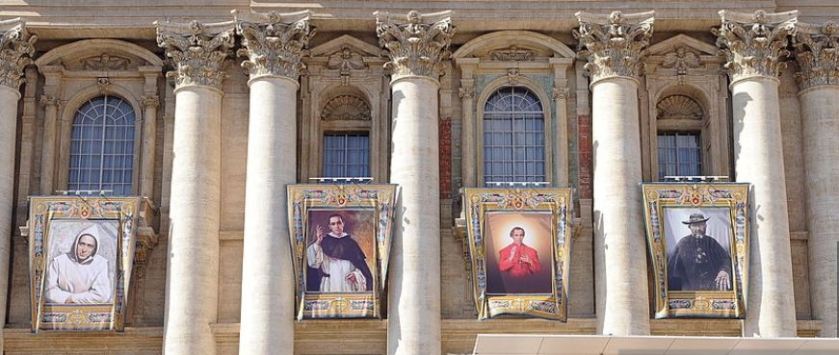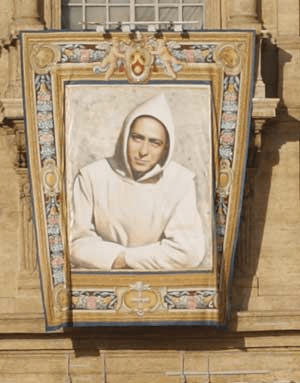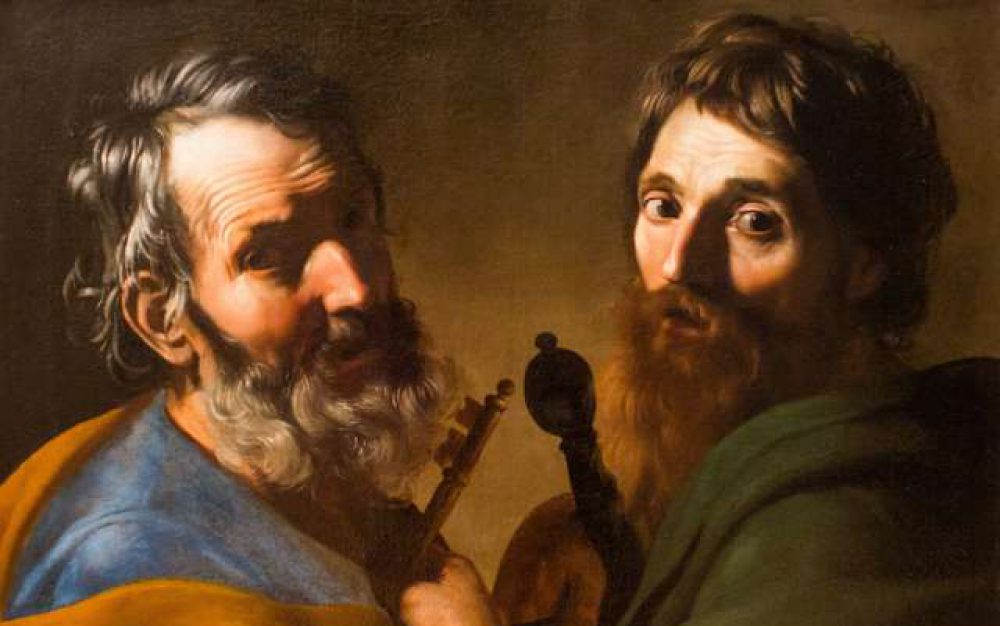Saint of the Day – 26 April – St Rafael Arnáiz Barón O.C.S.O. (1911-1938) 9 April 1911 in Burgos, Spain – 26 April 1938 in Dueñas, Palencia, Spain – Religious Brother of the Cistercian Monastery of the Strict Observance (Trappists), Apostle of Eucharistic Adoration and of the Blessed Virgin Mary, Artist and Writer. Known as Brother María Rafael. Patronages – against diabetes, diabetes mellitus, World Youth Day 2011.

St Rafael Arnáiz Barón was born in Burgos, Spain, on 9 April 1911 into a well-to-do Christian family. He was the eldest of four. As a boy he attended several schools run by Jesuits and his sensitivity to spiritual topics and to art was apparent from boyhood. These qualities were remarkably well balanced giving him an open, joyful attitude to the world, combined with exuberant good humour, respect and humility.
Bouts of fever and pleurisy interrupted his education. When he had recovered his father took him to Zaragoza to consecrate him to Our Lady of the Pillar and his family moved to Oviedo where he completed his secondary schooling.
In 1930 Rafael embarked on architectural studies in Madrid. It was in this year that his deeper commitment to Christ began. After completing his secondary schooling, that summer he had spent a holiday near Avila at the home of his uncle and aunt, the Duke and Duchess of Maqueda. It was they who introduced him to the Trappist Monastery of San Isidoro de Dueñas whose beauty and prayerful atmosphere attracted him.
Rafael was a talented artist, His pictorial powers both in concept and in actual completion were considerable and he was far from fussy. His teacher says of him:
“He was magnificent in the art of decoration and had done
some truly outstanding pieces . . . both in oils and in watercolour,
he worked to large design and without fussiness; he
needed only a few highly descriptive brush strokes to bring
it off; he knew how to give strength and setting to all he did.
He had a very exact sense of colour and in some of his pictures
he was able to achieve the most difficult tints. One peculiarity
was that when Rafael did landscapes, he preferred
to completely exclude from them any sign of people; none of
his works contain a single human figure that could take or
distract from the luminosity of the whole.”
He was called up but declared unfit for active duty. He decided to abandon his architectural studies in Madrid and seek the mystery of the “Absolute” in this Cistercian Monastery of the Strict Observance, which he entered on 16 January 1934 and joyfully received the white habit. He was 23. He said upon entering that this decision had not been prompted by suffering or disappointments but rather by God who, “in his infinite goodness” had given him far more in life than he deserved. Rafael felt deeply suited to the monastic rhythm of Gregorian chant and the Liturgy of the Hours. He wrote many letters to his mother, who after his death collected them in a book and to his uncle and aunt with whom he had a close friendship.

Four months after entering the monastery, after an austere Lent, he was smitten by a serious form of diabetes mellitus which forced him to go home for treatment. Indeed, he was obliged to go back and forth between his home and the monastery again and again between 1935 and 1937. It was at the height of the Spanish Civil War.
Thus, on his final return to the monastery, he was made an oblate, taking the last place and living on the fringes of the community. Canon law at the time did not permit a person in his condition of poor health to take monastic vows.
The Virgin Mary was the love and consolation of Rafael’s life. “It is a pity,” he wrote, “that David [the psalmist] didn’t know the Most Holy Virgin! What marvelous things he would have said about her! A heart as big as his would certainly have been full of love for Mary! Mary! If only I knew how to write!”
He died in the monastery’s infirmary on 26 April 1938 after a final attack of the disease at only 27 years old. He was buried in the monastery cemetery and his remains were later translated to the Abbey Church.
Despite his brief life, he embodies the Cistercian grace in a remarkably pure way. From beginning to end he let himself be led through a series of bewildering contradictions and perplexities illness, war, the inability to pronounce his vows, abnormal community relations until he totally renounced himself. Humiliation was his constant companion.
His one desire was to live in order to love: to love Jesus, Mary, the Cross, his Trappist monastery. His reputation for holiness spread rapidly throughout Spain and his grave at San Isidro became a place of pilgrimage where many favours were received.
On 19 August 1989, at the World Youth Day in Santiago de Compostela, John Paul II proposed Bro. Rafael as a model for young people today and beatified him on 27 September 1992, in Rome. In his Homily at the beatification Mass, the late Pope said of this Spanish Trappist that he set an example, especially for young people, “of a loving and unconditional response to the divine call”. (Vatican.va)

The sainthood process started in Palencia in an informative process that spanned from 28 June 1961 until 30 April 1967 while theologians agreed on 25 January 1974 that all of his spiritual writings were in full accordance with the norms of the faith. The formal introduction to the cause came later on 15 January 1983 and the late Trappist became titled as a Servant of God. The Congregation for the Causes of Saints validated the informative process in Rome on 26 June 1987 and received the Positio dossier in 1987. Theologians approved this dossier on 12 May 1989 as did the C.C.S. on 11 July 1989. The confirmation of his heroic virtue on 7 September 1989 allowed for St Pope John Paul II to sign a decree that titled him as Venerable.
The process for a miracle took place in the location that it originated in and it received C.C.S. validation on 6 October 1989; a medical board approved it on 31 October 1991 as did the theologians on 4 March 1992 and the C.C.S. on 7 April 1992. St John Paul II approved this miracle on 13 June 1992 and beatified the Trappist on 27 September 1992 in Saint Peter’s Square. The process for another miracle opened in Madrid and spanned from 9 April 2005 to 7 May 2006 before its validation on 30 November 2006. Medical experts assented to this on 13 March 2008 as well as theologians on 7 June 2008 and the C.C.S. members on 4 November 2008. Pope Benedict XVI approved this miracle on 6 December 2008 and formalised the date for the sainthood celebration in a consistory on 21 February 2009. Pope Benedict XVI Canonised him on 11 October 2009.
Canonisation miracle
The miracle that led to the Canonisation was the January 2001 healing of Begoña Alonso Leon in Madrid. She was 30 and in the fifth month of being pregnant with her daughter Laura and began to feel severe contractions and headaches as well as signs of eclampsia. On 25 December 2000 – Christmas – she was admitted at seven months into a Madrid hospital due to the symptoms worsening and after an ultrasound was directed to the surgical theatre for a cesarean section. Her daughter was born in good health but Leon’s condition worsened and she was in the intensive care unit for over two weeks. Her rapid healing after this was attributed to the late Trappist whom she appealed to during her illness.











